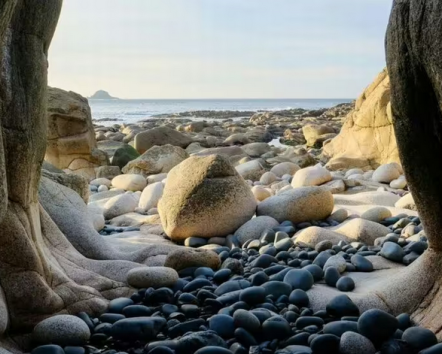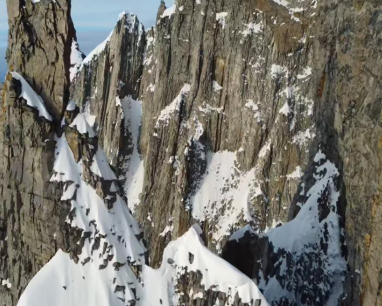Beach Covered with 'Dinosaur Eggs': What One of the 50 Best Coastlines in Europe Looks Like.


In Port Nanven cove in England, you can find a beach with stones resembling dinosaur eggs
One of Cornwall's best-kept secrets - Port Nanven cove, known as 'Dinosaur Egg Beach', is located in England. It is hidden on a winding road, and few tourists have the courage to walk it. This place seems to be from another Time, and on the beach itself, you can see stones that resemble dinosaur eggs.
'The iconic rocks were formed by storms around 120,000 years ago - and after too many people tried to take them home as souvenirs, the National Trust stepped in to protect the ancient stones. Despite being off the tourist trail, they unexpectedly - but quite deservedly - made it to The Guardian's list of the 50 best beaches in Europe,' the article stated.
Elliptical boulders, formed a long time ago, can be seen on the beach and within the cliffs. According to historian Elizabeth Dale, they are visible due to the 'uplifted beach' formed during the Ice Age. To reach this beach, it is better to walk and enjoy the beautiful views.
'Port Nanven beach actually has what is known as an 'uplifted beach', formed sometime during the last Ice Age. Also known as a 'marine terrace', this uplifted beach was originally formed during the last 'interglacial uplift', a period of rising sea levels caused by the melting of ice sheets. Then, when sea levels fell again, the beach remained high and dry. During stormy seas and very high spring tides, waves can sometimes reach great heights,' Dale explained.
The beach can be visited by car, but walking provides the best experience. During low tide, the beach is only open for a few hours a day, so it's worth planning your visit in advance. Also, peregrine falcons nest on the cliffs above, which can be seen from the beach.
Read also
- The polar explorers showcased the fairy-tale mountain Demaria, located near 'Verkhandsky'
- Real gems for travelers: four medieval cities in Europe that are especially beautiful in spring
- Outpaced Fifth Avenue: Which Street in the World Became the Most Expensive
- Hotel with people caught fire at resort in Turkey
- For a Calm Family Holiday: Spanish Resort Named Where You Can Hide from the Crowds
- Not just Bali: which picturesque corners of Indonesia deserve your attention









